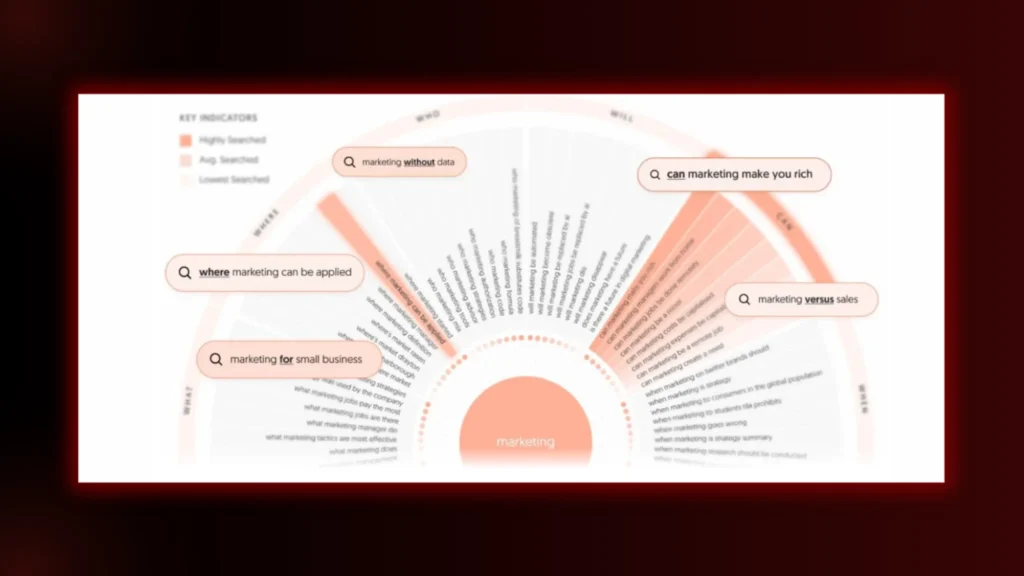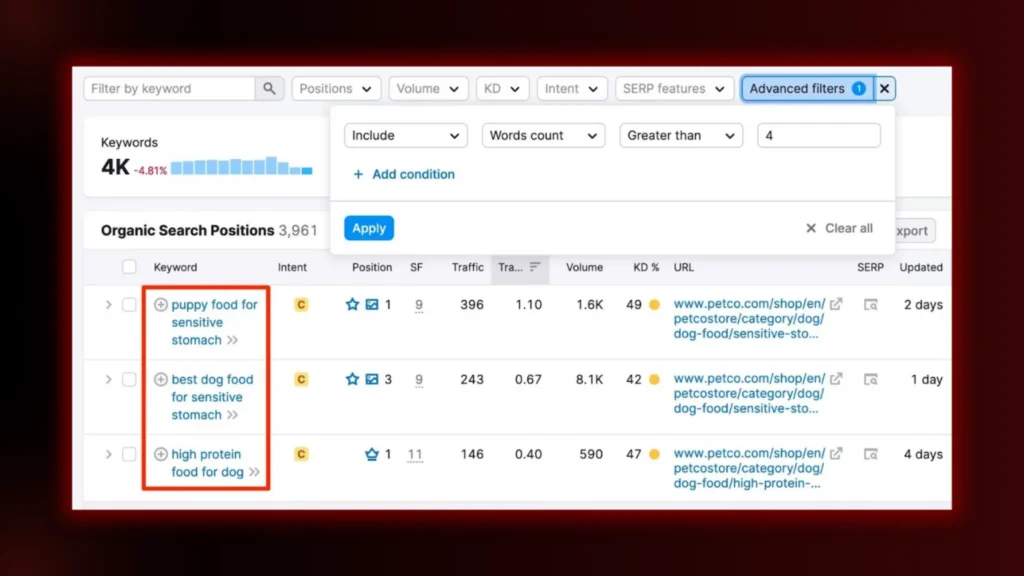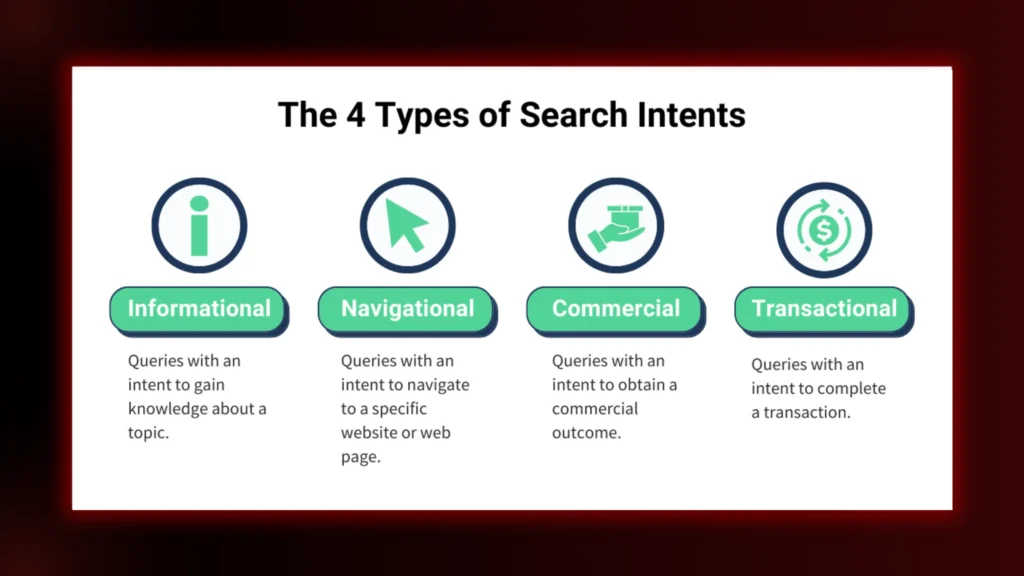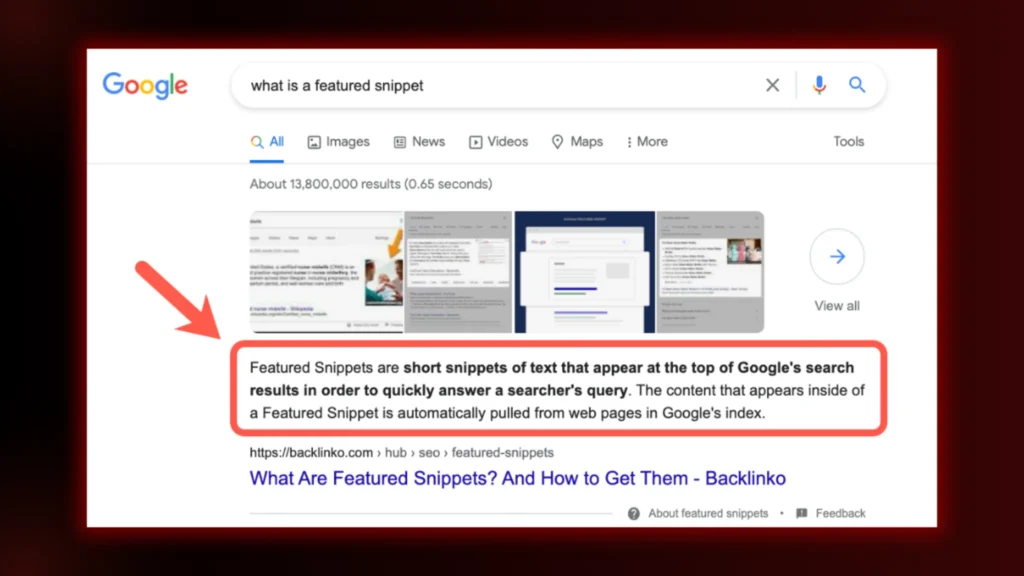If you’ve ever felt like your website is shouting into the void, you’re not alone. Business owners like you give time, money, and effort into creating incredible products or services, only to watch them get buried under a mountain of competitors on Google.
The harsh reality? In high-competition markets, a good idea isn’t enough. You need the right visibility. That’s where SEO keyword research for high competition becomes your secret weapon.
Let’s face it: traditional keyword strategies won’t cut it when you’re up against industry giants with massive budgets. The game changes when your audience searches for solutions, but your competitors dominate the top spots.
The good news? You can compete and win by targeting the right keywords in the right way.
In this guide, we’ll break down the approach towards SEO keyword research for high competition strategically and help you connect with your ideal audience without exceeding your budget.
Ready to stop guessing and start growing? Let’s start.
What is SEO Keyword Research for High Competition?
SEO keyword research for high competition is a process of identifying the terms that people commonly enter in search engines when they are looking for any information product or service. Any SEO strategy will have these search terms, also called keywords. Businesses can improve the visibility of their website, attract organic traffic and ultimately convert more visitors by targeting the relevant keywords.
For example, suppose you have an online bookstore. You can chase generic terms such as “books” which are pretty competitive but rather target the long tail such as “best mystery books under 20 dollars” or “classic novels for young adults.” Both of these terms are more specific, have less competition, and will appeal to users who are interested in receiving your email.
Why SEO Keyword Research for High Competition Matters in Competitive Niches
SERPs are where multiple businesses compete for visibility in the same search engine results pages. If you don’t do enough research, you’ll be focusing on irrelevant keywords, too competitive keywords, or keywords that aren’t hitting your dream audience. Here’s why keyword research is crucial:
- Discover Profitable Opportunities: Effective research helps you find keywords with high search volume and low competition with high ROI.
- Optimize Resources: Rather than wasting time on a range of static keywords, you can direct all your efforts towards keywords that make sense for your audience’s needs and agenda.
- Boost Visibility: Using terms unique to your content or niche will help you rise incrementally in the crowdsourcing market and gradually raise your domain authority.
- Understand Audience Needs: So, if you can do keyword research, you can get insights into what topics your target audience is looking for and what’s more relevant and engaging content.
For instance, suppose you’re in the fitness industry and competing on the basis that people need home workout routines for beginners rather than workout routines.
How to Conduct Effective Keyword Research
1. Start with a Competitor Analysis

With competitor analysis, you receive a blueprint of what’s happening in your industry. Use tools like Ahrefs, SEMrush, or Moz for competitor analysis to:
- Make sure you find the keywords they’re ranking for that are doing best for them.
- Fill in the gaps where you can provide spot content to create unique value.
- Look at how they got backlinks to identify other linkable pieces you own.
As an example, if a competitor is ranking well for ‘yoga for stress relief’ then try to create content around ‘yoga poses for stress and anxiety relief’ or ‘guided yoga sessions for mental health,’.
2. Use Advanced Keyword Tools
Utilize tools meant to deliver data-driven perspectives. Here are some popular options:
- Google Keyword Planner: Discover search volume, competition and related keywords, a classic tool.
- AnswerThePublic: Ideal for getting long-tail queries and popular questions.
- Keyword Surfer: Provides real-time data within your browser.

These tools can also uncover some new opportunities. One thing is ‘vegan protein powder’ which has a lot of search volume, and another thing could be the more lucrative ‘the best vegan protein for athletes.’
3. Focus on Long-Tail Keywords

Long-tail keywords, which consist of three or more words, are typically:
- Less competitive, making them easier to rank for.
- More specifically, matching user intent more closely.
Instead of targeting “smartphones,” aim for terms like “best budget smartphones under $300” or “smartphones with best battery life.”
4. Analyze Search Intent
Understanding search intent and the reason behind a query is critical for creating relevant content. Intent is generally categorized into:

- Informational: Users want to learn (e.g., “How does SEO work?”).
- Navigational: Users are searching for a specific website or brand (e.g., “Nike official store”).
- Transactional: Users are ready to buy (e.g., “Buy running shoes online”).
- Commercial: Users research their options before deciding on purchasing (e.g., “Ahref vs Semrush features” )
By tailoring your content to the user’s intent, you improve engagement and conversion rates.
5. Use SERP Features
Modern SERPs are packed with features such as:
- Featured snippets.

- “People also ask” boxes.
- Video carousels.
Optimizing your content for these features can boost visibility. For instance, answering common questions directly in your content increases your chances of being featured in the “People also ask” section.
The Role of Content in High-Competition SEO

1. Create Comprehensive, High-Quality Content
Search engines reward content that offers depth and value. To achieve this:
- Integrate primary and secondary keywords naturally.
- Use headings, subheadings, and bullet points for better readability.
- Support your content with data, examples, and case studies.
2. Optimize Meta Descriptions and Titles
Your meta descriptions and titles act as the first impression in SERPs. Include target keywords and craft compelling copy to improve click-through rates (CTR).
For instance, instead of “SEO Tips,” opt for “10 Proven SEO Tips to Boost Traffic in 2025.”
3. Incorporate Multimedia
Images, videos and infographics are not only a great way to improve user experience, but also something that generally increases metrics like dwell time. For image search always add proper alt text along with relevant keywords so that search engines can understand what is appearing in the images.
Technical Aspects of SEO Keyword Research

1. Monitor Keyword Performance
Track the effectiveness of your keywords using tools like Google Search Console. Focus on:
- Click-through rate (CTR).
- Impressions and rankings.
- Conversion rates from organic traffic.
2. Use Schema Markup
Schema markup gives more context to the search engines. For example, adopting FAQ schema increases the chances of appearing in rich results.
3. Optimize for Mobile and Voice Search
Voice search and mobile usage are growing, so if you want to rank you need to optimize for natural, conversational queries. For instance, users might say, “I need a best Italian restaurant near me” or “What’s the best Italian restaurant near me?”
Link Building for High-Competition Keywords
Backlinks remain a key ranking factor. Here are some strategies to grow:
- Guest Blogging: Write articles for authoritative sites in your niche.
- Influencer Collaborations: Partner with influencers to amplify your content.
- Original Research: Create unique studies or surveys that others will reference and link to.
Conclusion
SEO keyword research for high competition is what makes or breaks any successful digital marketing campaign. If you combine the use of advanced tools, target long tail keywords, and create content that is aligned with user intent, you can put together a strong foundation for your sustainable growth.
If you wanna get your SEO keyword research for high competition done by a professional and experienced team, BrandClickX is the name to call!
Contact us for further info!
FAQs
What is SEO keyword research for high competition?
SEO keyword research for high competition involves identifying and analyzing keywords that have a high search volume and are targeted by many competitors. The goal is to find keywords that strike a balance between relevance, traffic potential, and the feasibility of ranking higher than competitors in search engine results.
What is keyword difficulty, and how does it impact high-competition SEO?
Keyword difficulty is a metric that measures how hard it is to rank for a specific keyword. For high-competition SEO, targeting keywords with manageable difficulty levels while still delivering value and relevance to your audience can improve your chances of ranking higher.
Should I prioritize high-volume keywords in high-competition niches?
Not always. While high-volume keywords can attract more traffic, they’re often harder to rank for. Balancing high-volume keywords with low-competition, long-tail keywords ensures you capture traffic from various search queries while improving your chances of ranking.



